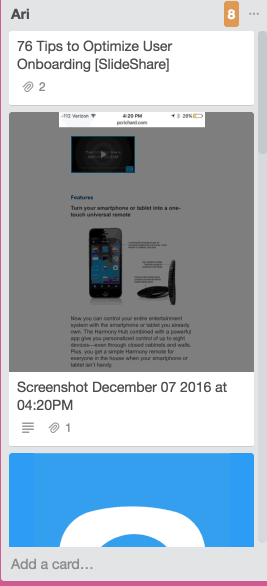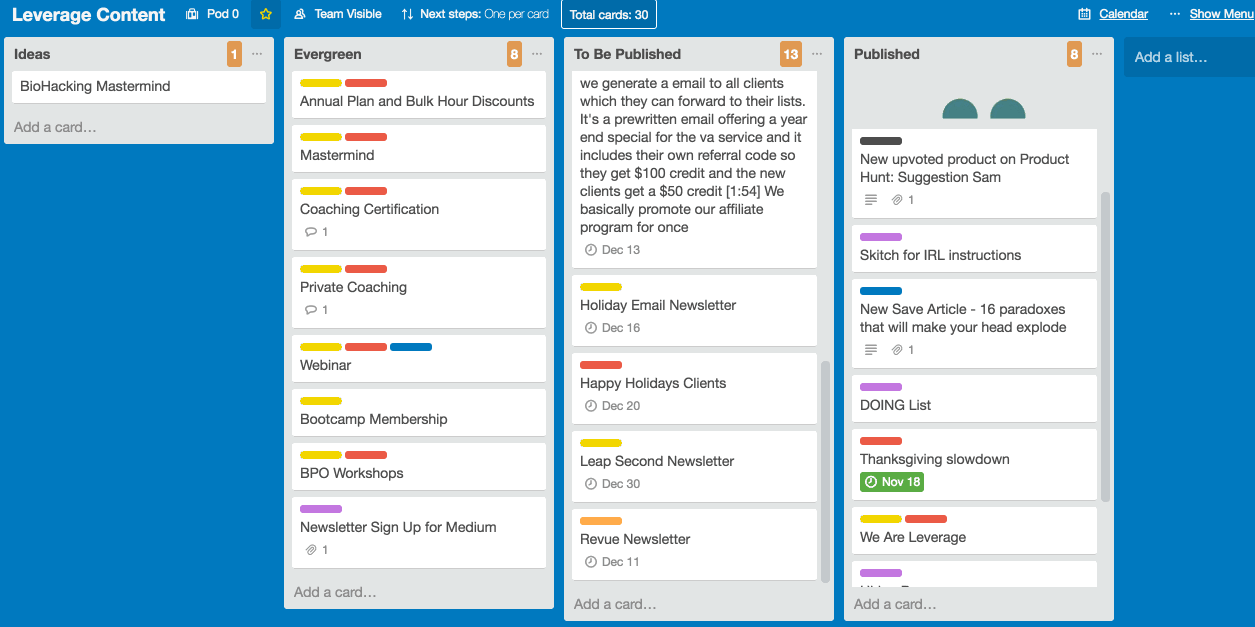I’ve worn many different hats as an entrepreneur. But the one thing that has remained is my unique ability to distill enormous amounts of content into workable solutions for my clients.
I’m able to “connect the dots” really well. I like solving problems. Whether that’s the best way to get an idea out of your head, or automating your hiring process.
Here’s how I process a massive amount of content on a weekly basis.
I follow about 200 different blogs that put out over 1000 posts per day. I follow and actually read about 30 email newsletters each week. I’m currently subscribed to 22 podcasts, not including my own. And now that I’ve been doing this for a while, people send my things by Twitter, Slack, Email, and even SMS on a near hourly basis.
So, needless to say, it’s a lot.
There are two sides to what I consider “processing” content.
First you have to take it all in.
Second, you have to be able to disseminate it properly; which includes internalizing it so you can recall it at some later date if needed.
The first thing I do is get everything I find from all these different sources into one consolidated place. That place, is a Trello list.

Now the cool thing is the way that things get onto this list, a lot of it is powered by automations setup with IFTTT.
- I use Feedly to follow all of the different blogs and when I “save” something on Feedly, IFTTT creates a card for it in Trello
- If I get an interesting email and I forward it to a special email address for my Trello board, it creates a new card in the list
- If I visit a cool website on my desktop I click the Trello extension and it creates a card in my list.
- The coolest one is if I take a screenshot on my iPhone of a text message or a website or even a screen on a particular app, IFTTT will turn that into a card.

So that’s how everything gets into one organized place. It means I can grab things on the fly that I want to look at later, and then when I’m in a focused place, I can batch process those new items.
It also helps me commit many of these items to memory through the use of spaced repetition which means I’m exposing myself to the same piece of information more than once at different intervals. Basically, if in three years somebody says, “Is there an app that does X” most likely I’ll be able to recall the answer easily because of this method.
This is the fun part. I produce content for nearly a dozen different outlets on a weekly basis. There’s our client emails, general newsletter, Less Doing Podcasts, our FB group, our Mastermind, etc.
I approach my main list in Trello as a sorting list. I look at it and decide if it’s something I want to try out or work on myself, if it needs to go to someone on my team or if it’s going to go to my content board.

Once it’s on the content board I know what channel it has to go to and I can put due dates on items, which organizes my content calendar so I can consistently produce items, 7 days per week, and be cognizant of upcoming holidays or other events that might effect content.
Backup
I have a redundancy in place.
No matter what gets saved to my list, IFTTT also creates a note in Evernote. I use it as my ultimate brain dump because Evernote is good at bringing back content that’s relevant in the moment. It does that through the things you add to it in the moment as well as whatever you search for on Google. It will pop up with any related notes from your “external brain.” This ensures that nothing ever falls through the cracks and there’s always a place for things to go in order to be useful.
Whenever you are ready…here are 4 ways I can help you become more replaceable and grow your business:
1) Join our FREE Facebook Group – The Replaceable Founder
2) Get our FREE Replaceable Founder Mini-Course
3) Come to our next One-Day Intensive “Becoming Replaceable Workshop” in NYC
4) Want to work with us privately? Just answer a few questions and find out if you’re a good fit. Apply Now

